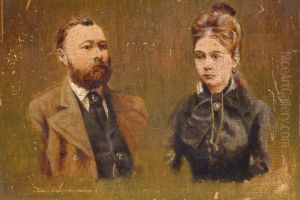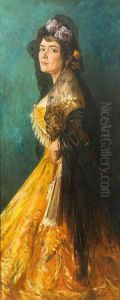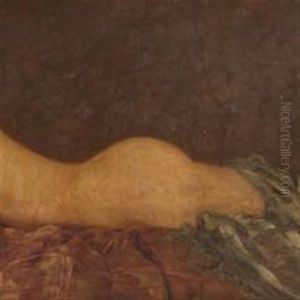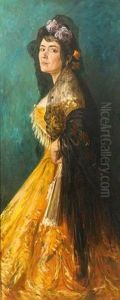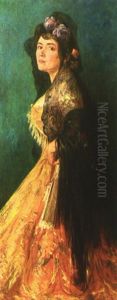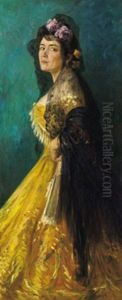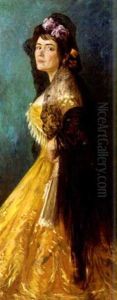Adolf Agost Barsy Paintings
Adolf Agost Barsy was a Hungarian-born artist whose life and work spanned across several countries and artistic movements in the early to mid-20th century. Born in Budapest, Hungary, in 1887, Barsy grew up in an era of significant artistic innovation and political upheaval, both of which influenced his development as an artist. Initially trained in his native Hungary, Barsy's style and approach to art were shaped by the vibrant cultural scene of Budapest, as well as by the broader European art movements of the time, including Impressionism and Post-Impressionism.
Barsy's career took a pivotal turn when he decided to move abroad, first to Paris and later to South America, where he lived in various countries including Argentina, Brazil, and Venezuela. This period of travel and international living further enriched his artistic style, introducing elements of South American light, landscape, and cultural motifs into his work. Throughout his career, Barsy remained deeply engaged with exploring the interplay of light and color, a fascination that can be traced back to his early exposure to European modernist movements.
Despite the geographical and cultural shifts in his life, Barsy maintained a consistent commitment to exploring and evolving his artistic vision. His works, which include paintings, drawings, and engravings, are characterized by a vibrant palette, dynamic compositions, and a unique blend of European modernism with South American influences. Barsy was also an influential teacher and mentor to many young artists in South America, where he contributed significantly to the local art scenes, especially in Venezuela.
Adolf Agost Barsy passed away in 1967, leaving behind a rich legacy of artistic innovation and cross-cultural exchange. His contributions to art are remembered for their vibrant energy, technical skill, and the seamless blending of diverse artistic traditions. Barsy's life and work exemplify the enriching effects of cross-cultural experiences in the world of art, making him a notable figure in the history of 20th-century European and South American art.
